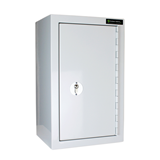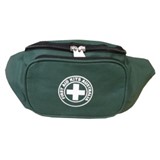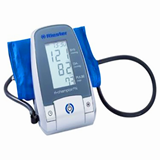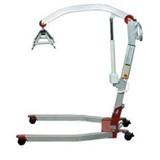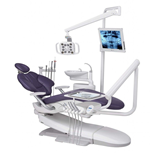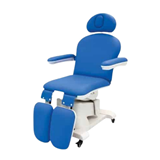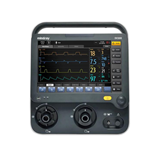- Drug improves visualisation of brain tumours by inducing them to fluoresce pink and red.
- Complete resection of mal ignant high grade glioma is doubled1
- 100% increase in the number of patients without progression of their brain cancer six months after their surgery
Neurosurgeons at Brisbane’s Wesley Hospital and the Royal Melbourne Hospital have pioneered the use of Gliolan® (5-aminolevulinic acid), describing it as "breakthrough technology".
The drug is given to patients three hours prior to surgery and causes cancerous tissue to glow fluorescent red during brain surgery. This enables improved visualisation of the boundary between healthy and diseased brain tissue, and aids the surgeon to more thoroughly remove the tumour.
International studies have shown the use of Gliolan during surgery has nearly doubled the rate of achieving a complete resection, and has doubled the number of patients without progression of their brain cancer six months after their surgery1.
Melbourne bio-pharmaceutical company Specialised Therapeutics Australia Ltd (STA) has licensed the drug for use in Australia and New Zealand. CEO of STA, Carlo Montagner said the availability of this drug in Australia will potentially benefit hundreds of brain tumour patients.
"We are pleased to make Gliolan available to Australians and expect it to be readily adopted by the neurosurgery community, so patients around Australia may benefit from the most sophisticated available technology," he said.
Montagner added: "We have made clear our strategy of building Specialised Therapeutics Australia through the recent acquisition and continued growth of several specialist medicines which offer unique clinical benefits to patients."
The pivotal Phase III registration study published in The Lancet Oncology medical journal demonstrated complete resection of malignant high grade glioma tissue in 65% of patients receiving Gliolan, compared with 36% of patients in the control arm. Additionally, 6-month progression-free survival was achieved in 41% of patients receiving Gliolan compared to 21.1% of patients who were operated on without the use of the drug1.
The principal investigator of this pivotal trial, German neurosurgeon Professor Walter Stummer, has been in Australia to provide education and training using Gliolan for fluorescence-guided surgery. Nineteen Australian neurosurgeons are now trained and have been certified in this method, which will enable them to offer fluorescence-based resection of brain tumours to their patients.
Melbourne neurosurgeon, Dr Kate Drummond from the Royal Melbourne Hospital commented: "We hope that by using this breakthrough technology we will be able to improve the outcomes for Australian brain tumour patients."
"In my first surgery using this drug, we found additional pockets of fluorescent pink tissue that I was able to remove, and that I may not have seen in a routine surgery. Using Gliolan allowed me to see the contrast of t he pink and red fluorescing tumour tissue compared to the healthy non-fluorescing brain tissue. I was able to protect the normal brain tissue from damage during the surgery. "
"We are pleased to be pioneering this operation at the Royal Melbourne Hospital and expect our neurosurgery colleagues around the country to follow suit."
The active substance in Gliolan, 5-aminolevulinic acid, is a photoreceptive compound which is absorbed by cells in the body, where it is converted by enzymes into fluorescent chemicals, particularly protoporphyrin IX (PPIX). 2
Since glioma cells take u p more of the active substance and convert it more rapidly into PPIX, higher levels of PPIX accumulate in the cancer cells than in normal tissue.
When illuminated under blue light of a specific wavelength, the PPIX in the tumour glows an intense red, while the normal brain tissue appears blue. This enables the surgeon to see the tumour more clearly during brain surgery and to remove it more accurately, sparing healthy brain tissue.2
The drug is approved for use in 27 countries across Europe, and Korea. Gliolan was first approved in Europe in 2001 and is marketed by Medac in Europe, Africa, South America and Asia (excluding Japan and Korea). Gliolan is not yet approved by the Therapeutic Goods Administration (TGA).
The drug will be made available to Australian neurosurgeons who have undergone training, through the federal government’s Special Access Scheme (SAS) until TGA approved.
References:
1. Stummer W, Pichlmeier U, Meinel T, et al., Fluorescence-guided surgery with 5-aminovulinec acid for resection of malignant glioma: a randomised controlled multicentre phase III trial, Lancet Oncol, 2006;7:392-401
2. European Public Assessment Report About Gliolan< sup>® the active substance in Gliolan, 5-aminolevulinic acid. It is absorbed by cells in the body, where it is converted by enzymes into fluorescent chemicals, particularly protoporphyrin IX (PPIX).
Since glioma cells take up more of the active substance and convert it more rapidly into PPIX, higher levels of PPIX accumulate in the cancer cells than in normal tissue. When illuminated under blue light of a specific wavelength, the PPIX in the tumour glows an intense red, while the normal brain tissue appears blue. This enables the surgeon to see the tumour more clearly during brain surgery and to r emove it more accurately, sparing healthy brain tissue.2
Like all medications Gliolan may cause side effects. Gliolan should not be used in patients with hypersensitivity to 5-ALA or porphyrins, in cases of acute or chronic porphyria, or in pregnancy. Cardiac disorders, gastrointestinal disorders and skin and subcutaneous disorders are all reported as being uncommon.

